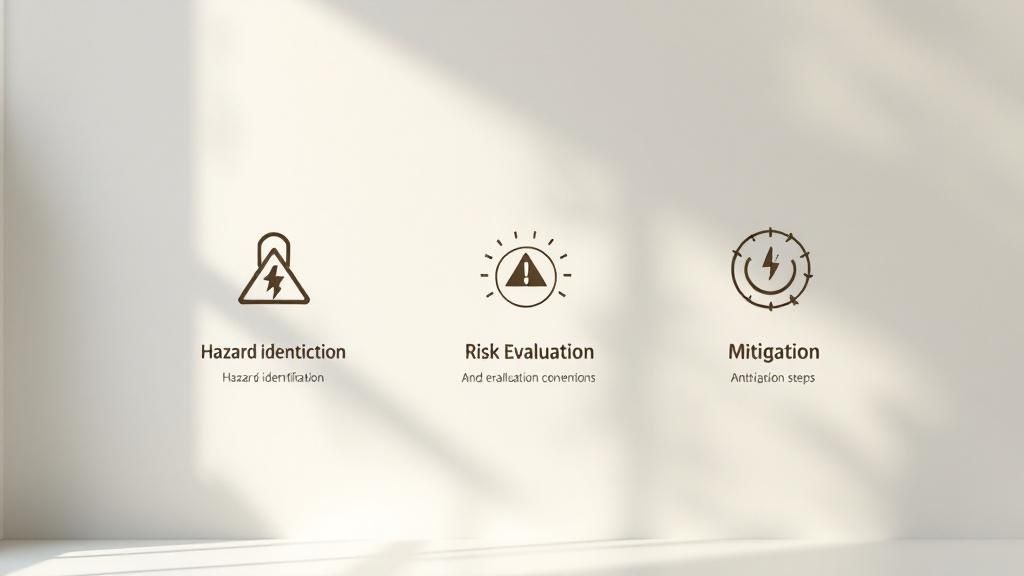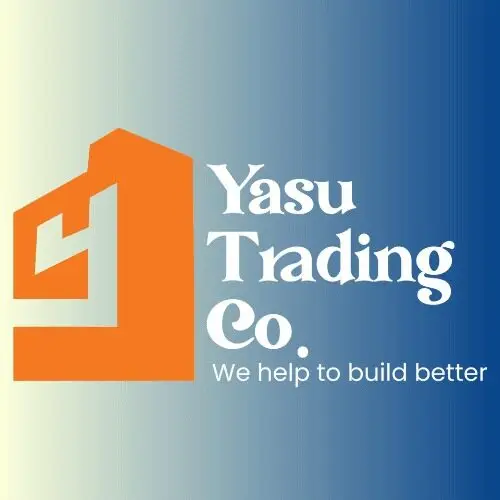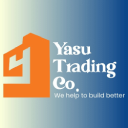Understanding Construction Risk Assessment Templates That Actually Work

A construction risk assessment template is essential for project safety and success. It acts as a roadmap, guiding you through potential hazards and enabling proactive mitigation before issues escalate. However, many construction projects struggle with effective risk management, often using templates that are rarely utilized. So, what makes a construction risk assessment template truly effective?
Why Risk Assessments Often Fail
One common reason for failure is the use of generic templates. These often don't address the specific challenges of a given project. A template designed for a small residential project in Dubai, for instance, won't adequately cover the risks of a large-scale infrastructure project in Abu Dhabi. Regularly updating the assessment as the project evolves is also crucial to avoid overlooking new hazards. Another critical factor is team buy-in. If the template is seen as burdensome or irrelevant, it's unlikely to be used effectively.
The construction industry in the Middle East and Africa (MEA) region is increasingly focusing on risk assessment and its impact on project success. By 2025, 97.6% of industry respondents anticipate revenue growth, emphasizing the importance of risk management in this expanding market. Find more detailed statistics here This growing awareness highlights the need for robust risk management practices.
Key Components of an Effective Template
An effective construction risk assessment template must include several key components. First, it should clearly identify potential hazards, categorizing them by type: safety, financial, environmental, and legal. This categorization allows for a more focused mitigation approach. A hazard identification matrix, for example, helps visualize the likelihood and potential impact of each hazard.
Second, the template needs a risk assessment section. Each hazard is assigned a probability and impact score. This prioritizes mitigation efforts, focusing on the most critical risks. Working at height, for instance, might be a high-probability, high-impact hazard requiring stringent safety measures. A delay in material delivery, while potentially impactful, might be considered lower probability.
Finally, a clear outline of mitigation strategies is crucial. This section details the specific actions taken to reduce the likelihood or impact of each hazard. For the working-at-height example, mitigation strategies could include providing safety harnesses, inspecting scaffolding, and implementing fall protection protocols.
From Paper to Digital: The Rise of Modern Templates
Traditional paper-based templates are being replaced by digital solutions. These digital construction risk assessment templates offer numerous advantages, allowing for real-time collaboration. Team members can access and update the assessment from anywhere, ensuring everyone works with current information.
Furthermore, digital templates often integrate with other project management software, streamlining workflows and reducing administrative burden. This integration facilitates a more holistic approach to risk management, linking it to project scheduling, budgeting, and resource allocation. These benefits make digital templates essential for modern construction projects in the MEA region, empowering teams to proactively manage risk and contribute to safer, more efficient, and more successful projects.
Mastering Regional Risk Assessment In The Middle East
The Middle East's construction boom presents exciting opportunities, but also unique challenges. These challenges demand specialized risk assessment approaches, as standard templates often fall short in addressing the specific complexities of this dynamic region. This section explores the unique risks encountered by construction professionals in the UAE, Saudi Arabia, and other Gulf states, empowering you to adapt your templates effectively.
Unique Challenges in the Middle East
From scorching summer temperatures exceeding 50°C that can halt progress to intricate labor regulations that vary between emirates, construction projects in the Middle East require specialized risk assessments. These factors can significantly impact project timelines and budgets if not properly considered. Cultural considerations also influence safety protocols, and geopolitical factors necessitate ongoing monitoring. You might be interested in learning more about construction logistics: How to master construction logistics.
Additionally, the Middle East's construction industry is known for its large-scale projects, with substantial investments driving growth. Saudi Arabia, for example, has ambitious plans to invest over USD 175 billion annually in industrial and mega projects. These large-scale projects introduce a unique set of risks related to scale, complexity, and stakeholder management. Explore this topic further
Adapting Your Construction Risk Assessment Template
Successfully navigating the Middle Eastern construction landscape requires customizing your risk assessment template. This involves addressing region-specific regulatory changes, considering cybersecurity threats, and acknowledging the significant environmental challenges, including water scarcity and extreme weather events.
-
Extreme Weather: Account for extreme heat, sandstorms, and occasional heavy rainfall. These conditions can impact worker safety, material durability, and project schedules. Include contingency plans for project delays and implement heat stress management strategies.
-
Labor Regulations: Stay updated on the specific labor laws of each emirate. Ensure compliance with working hours, safety standards, and worker welfare provisions.
-
Supply Chain Vulnerabilities: The Middle East often relies on international supply chains. This makes projects vulnerable to global disruptions. Evaluate potential supply chain risks, including logistical challenges, fluctuating material costs, and geopolitical instability.
-
Cultural Considerations: Cultural nuances can significantly impact project dynamics. Incorporate cultural sensitivity training for your team and ensure your risk assessment addresses cultural factors that might influence worker communication and safety practices.
Cybersecurity and Environmental Factors
Cybersecurity is a growing concern for construction projects globally, and the Middle East is no exception. Incorporate measures to protect sensitive project data and control systems from cyberattacks. This includes addressing data breaches, ransomware attacks, and disruptions to critical infrastructure. Your risk assessment should include contingencies for data recovery, system backups, and cybersecurity training for your team.
Environmental risks are particularly pertinent in the Middle East. Assess the potential impact of your project on the environment, including water usage, waste generation, and carbon emissions. Develop mitigation strategies to minimize your environmental footprint and comply with local environmental regulations. This might involve sustainable construction practices, water conservation measures, and responsible waste management protocols. For example, utilizing locally sourced materials can reduce transportation emissions and support regional economies. By addressing these crucial factors, your construction risk assessment template will become a more effective tool for ensuring project success in the demanding Middle East construction market.
Navigating African Construction Risk Assessment Challenges

The African construction sector offers exciting opportunities. However, it also presents substantial obstacles. These require a strategic approach to risk assessment that goes beyond simple checklists. This new approach must address the unique complexities of this diverse continent.
This means navigating changing regulations, infrastructure limitations, and localized challenges. These are often missing from standard construction risk assessment templates.
Addressing Unique Risks in African Construction
Success in African construction requires understanding and addressing key risks. These include currency fluctuations impacting project budgets and political instability affecting project continuity. Supply chain disruptions can also delay timelines.
Infrastructure deficits, such as unreliable power grids and limited access to quality materials, pose challenges. These can create unexpected problems even for experienced contractors.
For example, a project in Nigeria may face different regulatory hurdles than one in Kenya. This highlights the need for an adaptable construction risk assessment template. Community engagement is also crucial.
Understanding local customs and stakeholder interests can prevent project delays and ensure long-term success. Integrating these considerations into your risk assessment builds strong community relationships. It also demonstrates a commitment to responsible development.
In Africa, the construction industry faces unique challenges. These include regulatory complexities and infrastructure deficiencies. A thorough risk assessment template is crucial for navigating these complexities. This helps developers identify potential risks, like construction mafias in countries like South Africa. Learn more: Africa Construction Industry Databook
Mitigating Risks Through Strategic Planning
Leading construction companies in Africa use key strategies to manage risk. These include due diligence on local partners and contractors. They also establish clear contracts that address potential disputes. Robust financial controls help mitigate currency risks.
Data-Driven Risk Management
Data-driven analysis is increasingly valuable for identifying and mitigating region-specific risks. Analyzing historical project data, weather patterns, and local market trends allows construction teams to proactively identify potential problems. This might include assessing the risk of material theft, evaluating the potential impact of rainfall, or identifying supply chain bottlenecks.
Using technology can enhance risk management. Real-time project monitoring tools can provide insights into project progress and potential delays. This data, integrated into the risk assessment process, provides a more dynamic approach to risk mitigation. By adopting proactive strategies, construction companies can navigate the complexities of African construction while maximizing project success.
Essential Elements Of Professional-Grade Risk Assessment Templates

The infographic above highlights common construction risks. Falls account for 30%, equipment failures represent 25%, and environmental hazards make up 20%. This underscores the need for a robust risk assessment addressing these key areas. Falls, in particular, pose a significant threat on construction sites, requiring dedicated mitigation efforts within any professional risk assessment template.
What distinguishes a basic checklist from a professional-grade construction risk assessment template? It's the inclusion of key elements that facilitate thorough risk mitigation, allowing for proactive identification and management of potential hazards. These elements contribute greatly to project safety and success.
Identifying and Assessing Risks Effectively
A crucial component of any professional template is a risk identification matrix. This goes beyond simply listing potential hazards. It categorizes them by type, such as safety, financial, environmental, or legal, enabling the development of more focused mitigation strategies. For example, mitigating a worker falling from scaffolding requires different measures than addressing delayed material deliveries.
Another important feature is a probability and impact scoring system. This helps prioritize risks. Each hazard is assigned a score based on the likelihood of it happening and its potential effect on the project. A high-probability, high-impact risk, like a crane malfunction, requires immediate and comprehensive mitigation. A low-probability, low-impact risk may need less intensive action.
Mitigation and Communication Protocols
A professional template provides a clear framework for developing mitigation strategies. This involves outlining specific actions to reduce the likelihood or impact of each identified hazard. For example, mitigating the risk of falls could involve providing safety harnesses, regular scaffolding inspections, and safety training. You might be interested in: Essential building materials for construction projects in Dubai.
Effective communication is also essential. Professional templates emphasize clear communication protocols to keep all stakeholders informed about potential hazards, mitigation strategies, and any changes in the risk landscape. This might involve regular safety meetings, email updates, or even mobile apps for real-time communication on-site. This fosters a safety-conscious environment and ensures everyone understands potential hazards.
Stakeholder Analysis and Escalation Procedures
A comprehensive stakeholder analysis is crucial. This involves identifying everyone affected by the project and understanding their specific concerns. This analysis informs the risk assessment process, ensuring that all potential impacts are considered.
Finally, professional templates include clear escalation procedures. These protocols dictate when and how risks should be escalated to higher levels of management. This ensures critical risks receive prompt attention and appropriate action. For example, if a risk reaches a defined threshold, automatic notifications could be sent to project managers, triggering immediate intervention.
Let's look at a comparison of essential and optional components:
Introducing a table to compare essential and optional components within a construction risk assessment template. This comparison clarifies the core elements needed for a robust risk assessment versus those that can enhance it further.
| Component | Essential/Optional | Purpose | Implementation Difficulty |
|---|---|---|---|
| Risk Identification Matrix | Essential | Categorizes hazards for targeted mitigation | Low |
| Probability and Impact Scoring | Essential | Prioritizes risks based on likelihood and impact | Low |
| Mitigation Strategies | Essential | Outlines actions to reduce risk likelihood/impact | Medium |
| Communication Protocols | Essential | Ensures all stakeholders are informed | Medium |
| Stakeholder Analysis | Essential | Identifies all affected parties and their concerns | Medium |
| Escalation Procedures | Essential | Defines when and how risks are escalated | Medium |
| Contingency Planning | Optional | Develops backup plans for high-impact risks | High |
| Cost-Benefit Analysis | Optional | Evaluates the cost-effectiveness of mitigation strategies | High |
| Regular Review and Updates | Optional | Ensures the assessment remains current | Medium |
Key takeaway from the table: While optional components add value, the essential components form the foundation of any effective risk assessment process. These core elements work together to build a proactive risk management system, leading to safer and more successful construction projects.
Leveraging Digital Tools For Modern Risk Assessment Excellence

The construction industry is evolving, and with it, so is risk assessment. Traditional methods are giving way to digital tools, offering improved efficiency and accuracy. This allows for a more dynamic and proactive approach to managing risk in construction projects.
The Power of Cloud-Based Platforms
Cloud-based platforms are now fundamental for modern construction risk assessment. These platforms enable real-time collaboration, giving team members access to the most up-to-date assessments from anywhere. This ensures everyone stays informed, regardless of location.
Mobile apps designed for tough job sites bring risk assessment directly to the field. This allows field teams to instantly document hazards, providing crucial real-time data. This immediate feedback enhances the accuracy and relevance of the overall risk assessment.
Furthermore, integration capabilities connect these platforms with existing project management software. This streamlines workflows, linking risk assessment data with other project information, such as scheduling and budgeting. This provides a more holistic view of potential project impacts.
AI and Machine Learning in Risk Assessment
Artificial intelligence (AI) and machine learning are becoming integral parts of risk assessment. These technologies can identify patterns and predict potential problems before they escalate into costly issues. AI-powered analytics can analyze vast amounts of data, identifying trends and anomalies that could signal emerging risks.
For example, AI can analyze past project data to identify patterns related to weather delays, material shortages, or safety incidents. This analysis can then predict similar risks in future projects, allowing for proactive mitigation.
This predictive capability empowers proactive risk mitigation. By anticipating potential problems, construction teams can implement preventative measures. This minimizes delays, cost overruns, and safety incidents, leading to more efficient projects and improved safety.
Choosing the Right Digital Tools
The best digital tools depend on factors like project size, team structure, and budget. A small project might only need a simple mobile app for hazard identification. A larger project might require a comprehensive cloud-based platform with AI-powered analytics. You might be interested in: Busting myths about construction supplies in the UAE.
To help you choose, here’s a comparison of digital tool features based on project size and cost:
To help you choose, here's a comparison of features offered by some leading digital construction risk assessment platforms:
| Platform Feature | Small Projects | Medium Projects | Large Projects | Cost Range |
|---|---|---|---|---|
| Mobile Hazard Identification | Essential | Essential | Essential | Low |
| Cloud-Based Collaboration | Optional | Essential | Essential | Medium |
| Real-time Data Syncing | Optional | Essential | Essential | Medium |
| AI-Powered Risk Prediction | Optional | Optional | Essential | High |
| Integration with Project Management Software | Optional | Recommended | Essential | Medium-High |
This table highlights the core features often needed across different project scales, along with typical cost considerations.
Implementing Digital Solutions Effectively
Successfully integrating digital tools requires careful planning and execution. Training is essential to ensure teams know how to use the new software effectively. Integrating new tools into existing workflows is crucial for consistent use.
Clear communication about the benefits of digital risk assessment is also important. This helps address any resistance from teams used to traditional methods. Highlighting how these tools improve safety, efficiency, and project outcomes can encourage adoption.
A well-executed implementation strategy leads to greater team buy-in. This ensures digital tools are used effectively to enhance risk assessment practices. The ultimate goal is a safety-conscious culture where digital tools are valued assets for project success.
Implementing Templates That Teams Actually Use Daily
A well-designed construction risk assessment template isn't effective if it's not being used. Its real value comes from consistent daily application by your team. This relies on effective implementation, which includes strategic planning, thorough training, and ongoing support. This ensures its adoption becomes a regular part of your team's workflow.
Customization and Clarity: Tailoring Templates for Project Needs
Construction projects differ greatly. A residential build in Dubai presents different risks than a highway project in Abu Dhabi. Your construction risk assessment template needs to be flexible, meaning it should be customizable but still clear.
Start with a core template including essential elements like hazard identification, risk assessment, and mitigation strategies. From this base, develop supplementary modules for specific project types. These modules could address unique hazards related to high-rise construction, working near utilities, or projects in extreme heat.
Clarity is key. Use straightforward language, avoid jargon, and make sure the template is logically structured and easy to use. Include clear instructions and examples to guide users. This simplifies completion, encourages consistent use, and improves the accuracy of the assessments.
Training and Empowerment: Fostering a Culture of Safety
Effective training is essential for successful implementation. Hold workshops and on-site demonstrations to familiarize teams with the template. Focus on why it's important – how it benefits their safety and project success.
Encourage active participation by letting teams practice with real-world scenarios. This fosters ownership and builds confidence. Experienced workers may resist new methods, so help them understand how the template enhances their current knowledge. Acknowledge their expertise and involve them in training, allowing them to share insights and contribute to the process.
Accountability and Feedback: Continuous Improvement
Accountability ensures consistent use. Integrate the template into daily routines, making completion mandatory before any work begins. This emphasizes its importance. Regularly review completed assessments and give feedback, addressing any gaps or inconsistencies.
Track and monitor risk mitigation efforts to ensure actions are taken and their effectiveness is evaluated. Create a feedback loop, encouraging teams to suggest improvements based on their field experience. Regularly review and update the template based on this feedback and any changes in regulations or best practices.
Overcoming Implementation Challenges
Introducing new tools often meets resistance. Some may be used to older methods or view the template as more paperwork. Address these concerns directly. Clearly communicate its benefits, not just for overall safety, but for individual worker well-being. Explain how it reduces incidents, protecting them and their colleagues.
For instance, heat stress is a major risk in the UAE. Show how using the template to assess and mitigate this hazard helps prevent heatstroke and other heat-related illnesses. By linking the template to tangible benefits, you increase acceptance and encourage consistent use.
Another common issue is inconsistent use across different sites. Establish clear communication channels and use digital tools. Mobile apps, for example, allow access and completion on any device, anywhere. This promotes consistency and ensures real-time data collection.
Real-World Examples and Case Studies
Learning from others' successes and failures provides valuable lessons. Share case studies of companies in the AE region that have successfully implemented construction risk assessment templates. Highlight the positive impact on safety and project outcomes. For example, discuss how a company reduced workplace incidents by 20% after adopting a new template.
Also, analyze examples of implementation failures. These could involve poorly designed templates, inadequate training, or weak accountability systems. Studying these helps identify potential problems and avoid repeating mistakes, paving the way for a successful rollout.
Ready to strengthen your risk management and ensure project success? Yasu Trading Co. LLC offers a wide range of high-quality construction materials and safety equipment to support your projects. Visit Yasu Trading Co. LLC today to learn more and request a quote.


